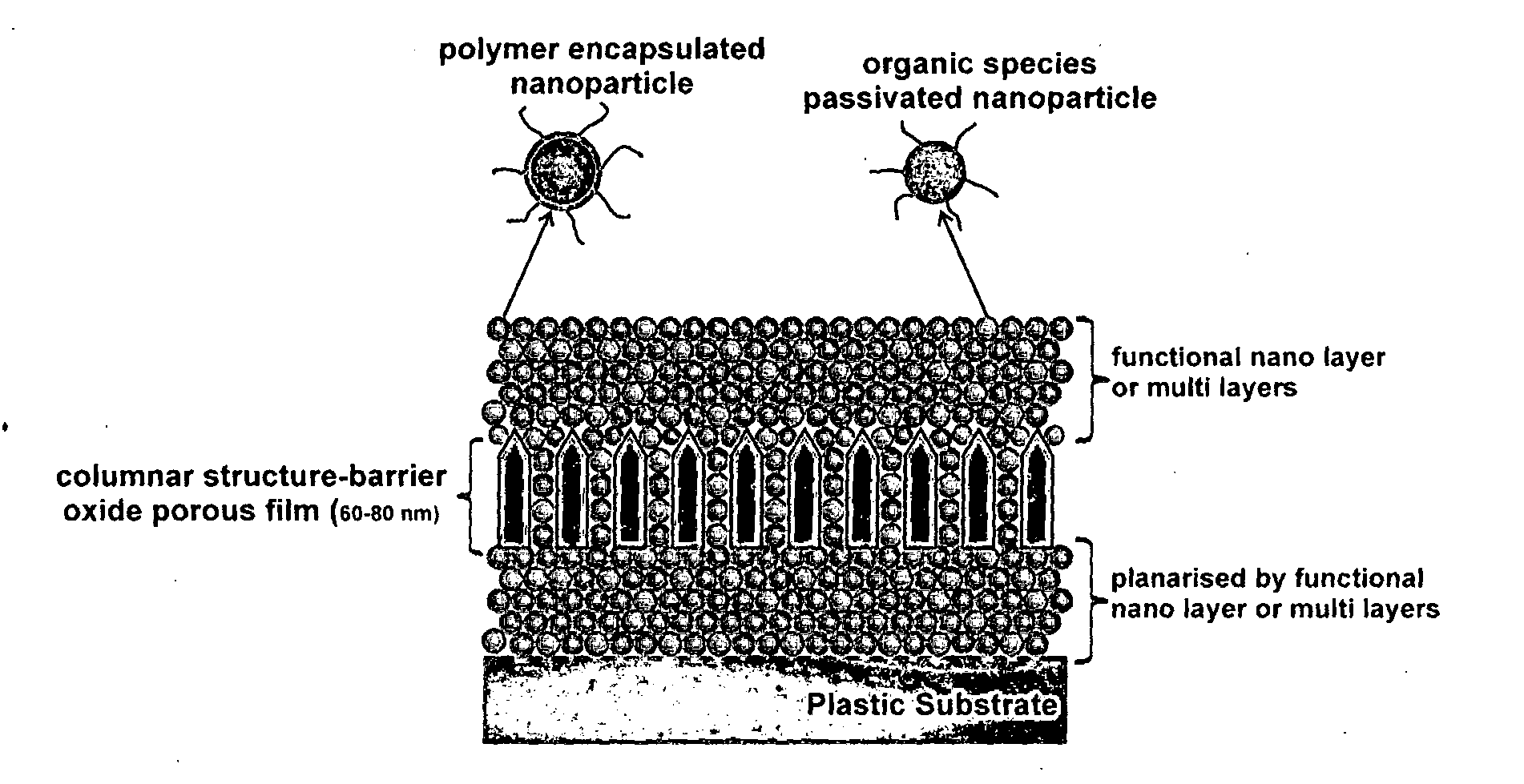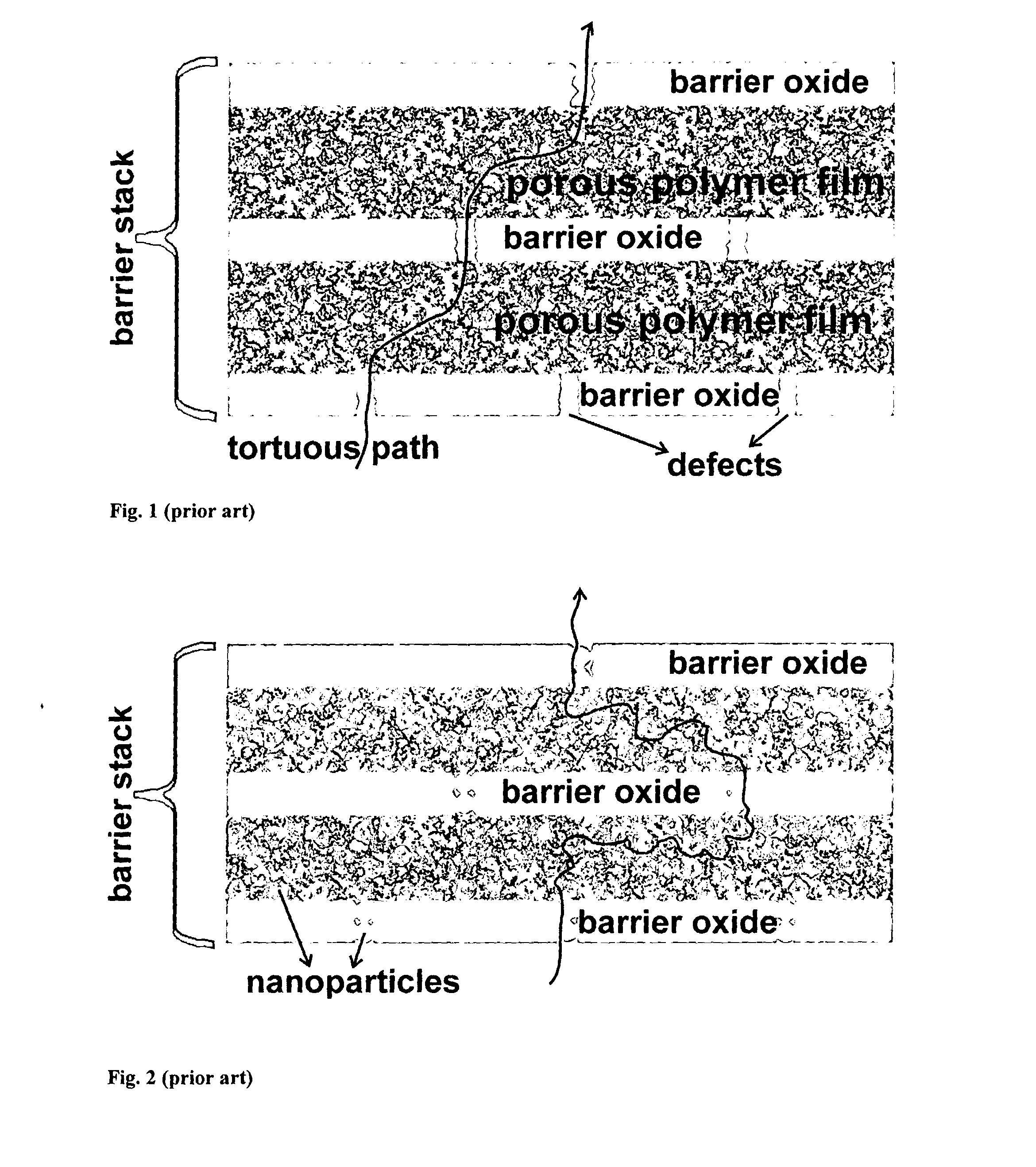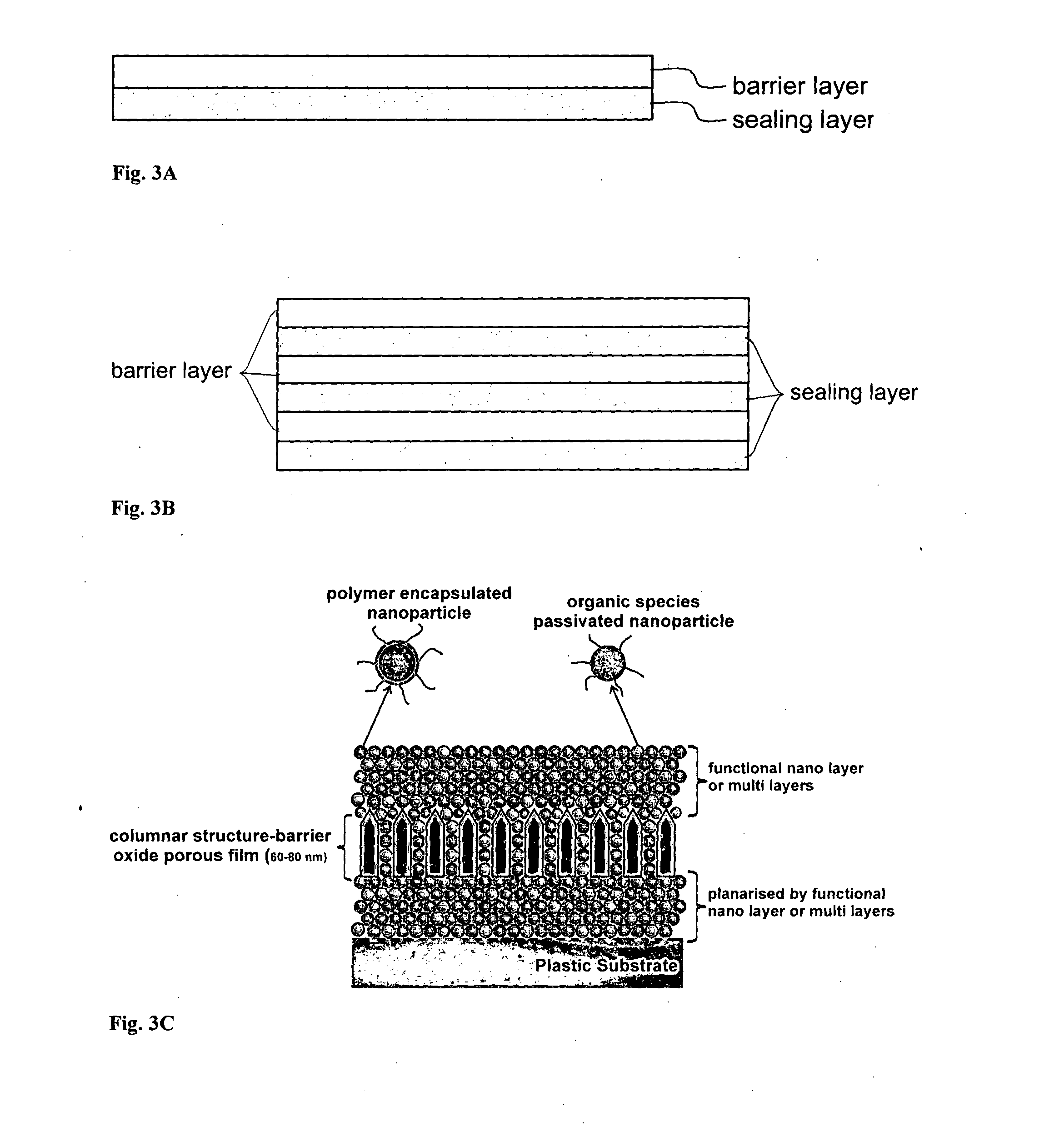Encapsulation barrier stack
a technology of encapsulation and barrier film, which is applied in the direction of sustainable manufacturing/processing, instruments, and final product manufacturing, can solve the problems of large affecting the performance of barrier film, large cost, and large cost, and achieve the effect of minimizing the lateral diffusion of oxygen/moistur
- Summary
- Abstract
- Description
- Claims
- Application Information
AI Technical Summary
Benefits of technology
Problems solved by technology
Method used
Image
Examples
embodiment 1
[0152]1. Plastic substrate—PET
[0153]2. Polymer encapsulated nanoparticle coating
[0154]3. SiN layer—CVD method
[0155]4. polymer encapsulated nanoparticle coating
[0156]5. SiN layer—CVD method
[0157]Nano Solution Preparation:
[0158]The solvent IPA:Ethyleactate 5:15 ml ratio is mixed, and 3-Methacryloxypropyltrimethoxysilane (10 ml) added and then surfactant Dow corning FZ 2110 is further added by 0.5% by total weight of the solution and mixed. The UV curable acrylate monomer (Addision Clear Wave)—(3 ml) is then added to the above mixture. The mixture is kept in sonication for 2 hours. The surface functionalized nanoparticle “Aluminum oxide, NanoDur™ X1130PMA, 50% in 1,2-propanediol monomethyl ether acetate”—20 ml is added to the solvent / monomer mixture and sonicated for a few hours. The above mixture was then spin coated and cured. The formulation was undertaken under inert gas environment. The set of experiments were carried out with different mixture of nanoparticles and spin coated ont...
embodiment 2
[0159]1. Plastic substrate—PET
[0160]2. SiOx layer—high speed manufacturing process
[0161]3. polymer encapsulated nanoparticle coating
[0162]4. SiOx layer—high speed manufacturing process
[0163]Nano Solution Preparation:
[0164]The solvent IPA:Ethyleactate (5:15 ml) ratio is mixed, and 3-Methacryloxypropyltrimethoxysilane (10 ml) is added and then surfactant Dow corning FZ 2110 is further added by 0.5% by total weight of the solution and mixed. The UV curable acrylate monomer (Addision Clear Wave)—(3 ml) is then added to the above mixture. The mixture kept is in sonication for 2 hours. The surface functionalized nanoparticle “Aluminum oxide, NanoDur™ X1130PMA, 50% in 1,2-propanediol monomethyl ether acetate”—20 ml added to the solvent / monomer mixture and sonicated for few hours. The above mixture was then spin coated and cured. The formulation was undertaken under inert gas environment. The set of experiments were carried out with different mixture of nanoparticles and spin coated onto th...
embodiment 3
[0165]1. Plastic substrate—PET
[0166]2. Polymer encapsulated nanoparticle layer
[0167]3. SiOx layer—high speed manufacturing process
[0168]4. Polymer encapsulated nanoparticle coating layer 1 (Defects sealing)
[0169]5. Polymer encapsulated nanoparticle coating layer 2 (anti-reflectance)
[0170]6. SiOx layer—high speed manufacturing process
[0171]Nano Solution Preparation:
[0172]The solvent IPA:Ethyleactate (5:15 ml ratio) is mixed, and 3-methacryloxypropyltrimethoxysilane (10 ml) added and surfactant Dow corning FZ 2110 is further added by 0.5% by total weight of the solution and mixed. The UV curable acrylate monomer (Addision Clear Wave)—(3 ml) is then added to the above mixture. The mixture is kept in sonication for 2 hours. The surface functionalized nanoparticle “Aluminum oxide, NanoDur™ X1130PMA, 50% in 1,2-propanediol monomethyl ether acetate”—20 ml is added to the solvent / monomer mixture and sonicated for few hours. The above mixture was then spin coated and cured. The formulation w...
PUM
| Property | Measurement | Unit |
|---|---|---|
| Mass | aaaaa | aaaaa |
| Polarity | aaaaa | aaaaa |
| Viscosity | aaaaa | aaaaa |
Abstract
Description
Claims
Application Information
 Login to View More
Login to View More - R&D
- Intellectual Property
- Life Sciences
- Materials
- Tech Scout
- Unparalleled Data Quality
- Higher Quality Content
- 60% Fewer Hallucinations
Browse by: Latest US Patents, China's latest patents, Technical Efficacy Thesaurus, Application Domain, Technology Topic, Popular Technical Reports.
© 2025 PatSnap. All rights reserved.Legal|Privacy policy|Modern Slavery Act Transparency Statement|Sitemap|About US| Contact US: help@patsnap.com



